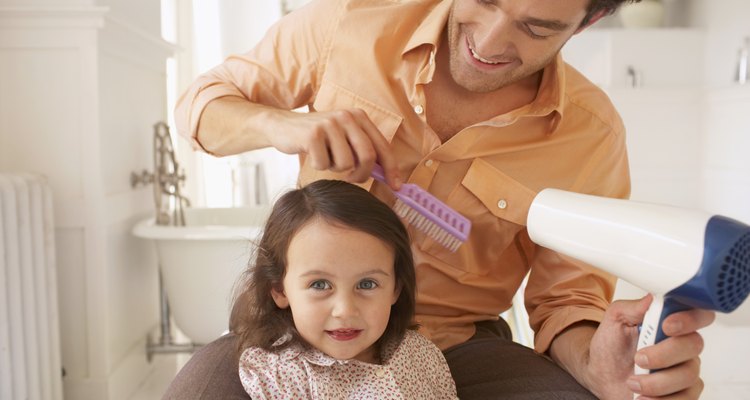
Christopher Robbins/Digital Vision/Getty Images
Blow-drying your hair can give you a more controlled style. It can also take a long time and damage your hair. Air-drying, on the other hand, is healthier but can leave you with wet hair for hours. It's up to you to decide which hair-drying method suits your lifestyle. Here are some facts and ideas to help you choose.
Dangers of Blow-Drying
You've probably heard that heat is bad for your hair. The Beauty Brains blog has the details: Each of your hair strands is covered with shingle-like structures called cuticles. These are layers of protein that protect your hair from damage. Heat breaks down the cuticle, making your hair rough and dull and more susceptible to damage.
In addition, heat causes your hair to lose moisture faster than it can be reabsorbed from the air, leaving it brittle. Finally, when you wet your hair, the fibers swell; when you dry it quickly, the fibers contract, causing cuticles to crack.
Misconceptions About Air-Drying
It's true that air-drying is better for your hair overall, but there are dangers to letting it dry slowly. Beauty Brains notes that combing your hair while wet can stretch the strands, causing damage and splits while it is at its most delicate. Rubbing your hair with a towel "will rip, strip, pop, snap and fry your hair in no time."
Allowing your hair to blow freely in the wind can cause it to knot, creating even more potential for split ends. Finally, going out into freezing temperatures with wet hair can cause it to freeze and break.
Recommendations
You should decide on a daily basis what is best for your hair. Overall, Beauty Brains recommends washing and drying your hair less frequently. When you need to dry your hair, decide whether you can take the time to blow-dry carefully or if you can afford to have wet hair while it air dries. If you choose to blow-dry, try not to overheat or stress the strands. If you air-dry, protect your hair from tangles without over brushing.
Safe Blow-Drying
To blow-dry your hair without doing too much damage, Beauty Brains recommends using a diffuser to avoid overheating. Keep the exposure time short to stop the "blow fryer" effect.
In an article on CNN.com, salon owner Johnny Lavoy recommends using a heat-protection product and keeping the blow dryer moving to avoid overheating any single spot. If you have dry hair, apply a silicone-based anti-frizz serum.
Convenient Air-Drying
To cut down on the time your hair takes to dry naturally, Beautiful With Brains suggests starting with a highly absorbent towel. Instead of rubbing, blot your hair gently. Then, use your fingers to fluff it from the roots, increasing air flow.
BellaSugar.com claims that you can detangle your hair with less breakage using a wide-toothed comb, and then apply an anti-frizz serum. If you want to create textures, try wrapping or braiding your hair while it dries.
Related Articles

How to Get Frizz-Free Hair When Your ...

How to Get a Healthy Spiral Perm
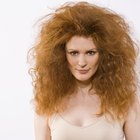
Taming Over-Permed Hair

How to Blow-Dry Afro Hair

How to Get Rid of Frizzy Straight Hair

How to Condition Hair After Using a ...

How to Moisturize Your Hair Weave

How to Control New Hair Growth
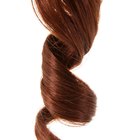
How to Style a Kanekalon Wig

How to Stop Hair Breakage From Coloring

How to Care for Natural, Short ...
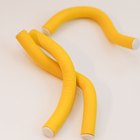
How to Curl Hair With Foam Rollers

Products That Relax Curls

How to Make a Stiff Weave Bouncy

How to Curl My Weave Without Heat

How to Deal with an Itchy Weave
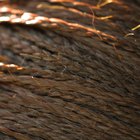
How to Braid Yaki Kanekalon Hair

How Soon Can You Color Your Hair After ...

Side Effects of Lye in Hair Relaxers

How to Cure Rough and Dry Afro Hair
References
Writer Bio
An award-winning blogger, Jessica Blue has been promoting sustainability, natural health and a do-it-yourself attitude since graduating University of California, Berkeley in 2000. Her work, seen in a wide variety of publications, advocates an environmentally-responsible and healthy lifestyle.
Photo Credits
Christopher Robbins/Digital Vision/Getty Images